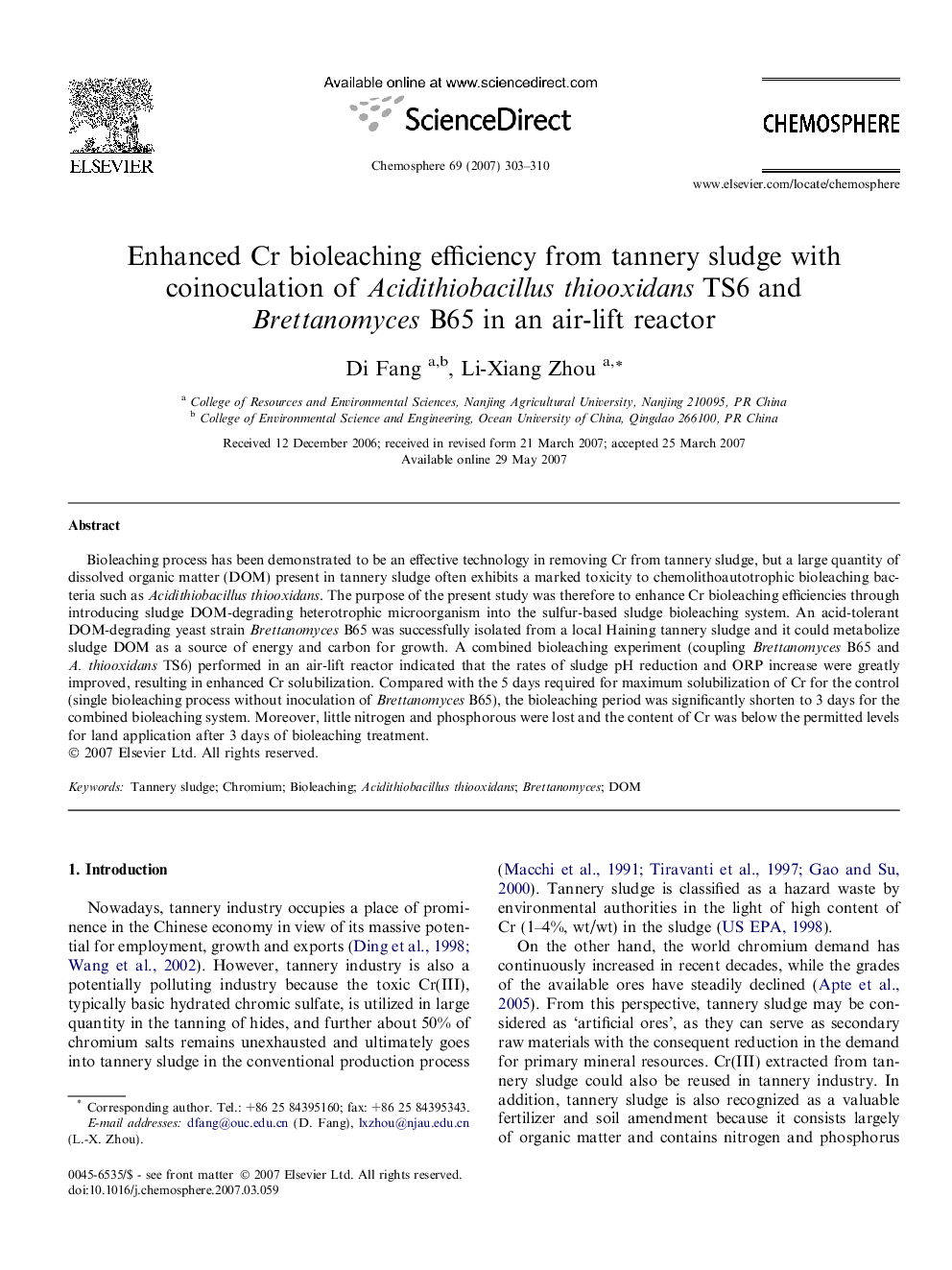| Article ID | Journal | Published Year | Pages | File Type |
|---|---|---|---|---|
| 4414716 | Chemosphere | 2007 | 8 Pages |
Bioleaching process has been demonstrated to be an effective technology in removing Cr from tannery sludge, but a large quantity of dissolved organic matter (DOM) present in tannery sludge often exhibits a marked toxicity to chemolithoautotrophic bioleaching bacteria such as Acidithiobacillus thiooxidans. The purpose of the present study was therefore to enhance Cr bioleaching efficiencies through introducing sludge DOM-degrading heterotrophic microorganism into the sulfur-based sludge bioleaching system. An acid-tolerant DOM-degrading yeast strain Brettanomyces B65 was successfully isolated from a local Haining tannery sludge and it could metabolize sludge DOM as a source of energy and carbon for growth. A combined bioleaching experiment (coupling Brettanomyces B65 and A. thiooxidans TS6) performed in an air-lift reactor indicated that the rates of sludge pH reduction and ORP increase were greatly improved, resulting in enhanced Cr solubilization. Compared with the 5 days required for maximum solubilization of Cr for the control (single bioleaching process without inoculation of Brettanomyces B65), the bioleaching period was significantly shorten to 3 days for the combined bioleaching system. Moreover, little nitrogen and phosphorous were lost and the content of Cr was below the permitted levels for land application after 3 days of bioleaching treatment.
